A Code-phase Shift Key-Linear Frequency Modulated Low Earth Orbit Navigation Signal and Acquisition Performance Analysis
-
摘要: 低轨导航星座卫星数量多,信号多普勒频偏大,接收机冷启动搜索空间巨大,捕获速度慢,该文提出一种伪码调相-线性调频(CSK-LFM)的导航信号波形,线性调频提高信号的多普勒容限,不同伪码相位实现不同卫星的多址播发,可以极大压缩卫星号、时延、多普勒3维搜索空间,加快了捕获信号捕获速度。仿真和实验结果表明,当信号强度为40 dBHz时,采用CSK-LFM调制的导航信号,其捕获性能比同等条件下的传统直接扩频序列(DSSS)调制的导航信号高1 dB左右,且信号搜索空间可降低为直接扩频序列调制的1/10。Abstract:
Objective The provision of satellite navigation services through Low Earth Orbit (LEO) constellations has become a prominent topic in the Position, Navigation and Timing (PNT) system. Although LEO satellites offer low spatial propagation loss and high signal power at ground level. However, their high-speed movement results in significant dynamics in the signal, leading to considerable Doppler frequency shifts that affect signal reception on the ground. This dynamic environment increases the frequency search space required by receivers. Furthermore, LEO constellations typically comprise hundreds or even thousands of satellites to achieve global coverage, further expanding the search space for satellite signals at terminals. Consequently, during cold start conditions, the LEO satellite navigation system faces a substantial increase in the search range for navigation signals, presenting significant challenges for signal acquisition. Existing GPS, BDS, GALILEO, and other navigation signals primarily utilize BPSK-CDMA modulation, relying on spread spectrum sequences to differentiate various satellite signals. However, these existing signals exhibit limited resistance to Doppler frequency offsets. Therefore, research into signal waveforms that are more suitable for LEO satellite navigation systems is crucial. Such research aims to enhance the anti-Doppler frequency offset capability and multi-access performance under conditions involving numerous satellites, thereby improving the signal acquisition performance of LEO navigation terminals and enhancing the overall availability of LEO navigation systems. Methods This paper adopts a multi-faceted research approach including theoretical analysis, simulation experiments, and comparative analysis. Since the performance of the correlation function directly impacts signal acquisition performance, an initial theoretical analysis of the correlation function and the multiple access capabilities of the proposed signal is conducted. Following this, the corresponding capture detection metrics and decision-making methods are proposed based on the principles of signal capture. The investigation continues with a focus on optimizing capture parameters, followed by verification of the signal’s acquisition performance through simulations and experiments. Additionally, the performance of the proposed signal is compared to that of traditional navigation signals using both theoretical and simulation analyses. Results and Discussions The theoretical analysis outcomes reveal that the proposed Code-phase Shift Key-Linear Frequency Modulated (CSK-LFM) signal exhibits lower Doppler loss, delay loss, and multiple access loss when compared to the traditional Binary Phase Shift Keying–Code Division Multiple Access (BPSK-CDMA) signal. To minimize the loss of signal detection capacity, it is advisable to expand the signal bandwidth and reduce the spread spectrum ratio during the signal design phase. A satellite parallel search method is developed for the acquisition of the CSK-LFM signal, employing a Partial Match Filter-Fast Fourier Transformations (PMF-FFT) approach. A parameter optimization model has also been developed to enhance the acquisition performance of the CSK-LFM signal. Furthermore, the acquisition performance of CSK-LFM and BPSK-CDMA signals are compared. Under the same conditions, the acquisition and search space required for the BPSK-CDMA signal is larger than that of the CSK-LFM signal. It is noteworthy that, under equivalent dynamic conditions, the acquisition performance of the CSK-LFM signal is approximately 1 dB superior to that of the BPSK-CDMA signal. Lastly, experimental results confirm that the proposed satellite parallel search method based on the PMF-FFT acquisition algorithm is effective for the acquisition of CSK-LFM signals. Conclusions To address the challenge of achieving rapid signal acquisition in low-orbit satellite navigation systems, a hybrid modulation scheme, CSK-LFM is designed. The LFM modulation improves the signal’s Doppler tolerance, while the use of diverse pseudo-code phases enables multiple access broadcasts from different satellites. This design compresses the three-dimensional search space involving satellite count, time delay, and Doppler shift. Additionally, a satellite parallel search method is implemented based on a PMF-FFT acquisition algorithm for the CSK-LFM signal. An optimization model for acquisition parameters is also developed to enhance performance. Our comparative analysis of the acquisition performance between CSK-LFM and BPSK-CDMA signals demonstrates that at a signal intensity of 40 dBHz, the navigation signal using CSK-LFM modulation achieves an acquisition performance approximately 1 dB superior to that of the BPSK-CDMA modulation signal under identical conditions; furthermore, the signal search space can be reduced to one-tenth that of the BPSK-CDMA modulation signal. -
表 1 不同调制方式下抗多普勒频偏能力和多址方式分析对比
调制方式 抗多普勒能力 信号多址方式 典型应用 直接序列调制 弱 不同码序列 GSP、北斗、伽利略等系统 频分复用调制 弱 不同频点 GLONASS系统 码相位偏移调制 弱 不同码相位 数据链、QZSS等系统中信息调制 线性调频调制 强 不同调频斜率、起始频率等 雷达系统,Lora系统 伪码-线性调频调制 强 不同调频斜率、起始频率、码序列 - 表 2 不同带宽和扩频比下的频率分格大小(kHz)
N 31 63 127 255 511 CSK-LFM B=4.092 MHz 79.20 38.97 19.33 9.63 4.80 B=20.46 MHz 396.00 194.85 96.66 48.14 24.02 B=40.92 MHz 792.00 389.71 193.32 96.28 48.05 BPSK-CDMA T=1 ms 0.9 1 基于PMF-FFT 结构的CSK-LFM 捕获算法
步骤1 生成本地复制的线性调频载波sl(k) 步骤2 生成本地复制伪码cl(n),并进行FFT运算,求复共轭,得到参考序列Cl(j)* 步骤3 在调频周期内将复制线性调频载波与接收信号相关并分段累加,得到累加结果y(n) 步骤4 对一个调频周期内的N段累加结果进行FFT运算,得到序列Y(j) 步骤5 将FFT结果与参考序列相关,对相关后的结果逆FFT处理,得到N颗卫星的捕获量z(k,i) 步骤6 对P个调频周期内的捕获量z(k,i)累加,得到Z(k,i),并与门限比较,超过门限则捕获成功,跳至步骤9 步骤7 移动接收信号一个采样点,重复步骤3–步骤6,直至遍历完成2个调频周期 步骤8 移动一个频率搜索格子,重复步骤1–步骤7,直至遍历完成所有频率格子的搜索 步骤9 在上调频信号捕获时延附近,搜索上调频和下调频信号,根据捕获位置按式(29)计算捕获时延和多普勒 表 3 捕获参数优化求解的信号条件
B(MHz) fd(kHz) CN0(dBHz) T(ms) N P 4.092 40 40 1 63 5 表 4 两类信号的搜索空间比较
多普勒范围(kHz) 多普勒格子(kHz) 搜索空间 多普勒范围(kHz) 多普勒格子(kHz) 搜索空间 BPSK-CDMA case4 ±5 0.5 8 184×20 case5 ±40 0.5 8 184×160 CSK-LFM case4-1 2.5 8 184×8 case5-1 2.5 8 184×64 case4-2 10.0 8 184×2 case5-2 10.0 8 184×16 -
[1] 李俊. 基于联邦卡尔曼滤波器的容错多传感器组合导航算法研究[D]. [硕士论文], 南京邮电大学, 2023. doi: 10.27251/d.cnki.gnjdc.2023.000673.LI Jun. Research on fault tolerant multi-sensor integrated navigation algorithm based on federated Kalman filter[D]. [Master dissertation], Nanjing University of Posts and Telecommunications, 2023. doi: 10.27251/d.cnki.gnjdc.2023.000673. [2] 王玉, 边启慧, 廖军, 等. 惯性稳定万向架中基于SBG惯导的捷联控制技术[J]. 光电工程, 2023, 50(5): 220238. doi: 10.12086/oee.2023.220238.WANG Yu, BIAN Qihui, LIAO Jun, et al. Strapdown inertial stabilization technology based on SBG inertial navigation in inertial stabilization gimbal[J]. Opto-Electronic Engineering, 2023, 50(5): 220238. doi: 10.12086/oee.2023.220238. [3] 邹涛, 王丽芬, 任元, 等. 冗余旋转惯导系统两位置初始对准方法[J]. 红外与激光工程, 2023, 52(1): 20220414. doi: 10.3788/IRLA20220414.ZOU Tao, WANG Lifen, REN Yuan, et al. Two-position initial alignment method for redundant rotating inertial navigation system[J]. Infrared and Laser Engineering, 2023, 52(1): 20220414. doi: 10.3788/IRLA20220414. [4] 张小红, 马福建. 低轨导航增强GNSS发展综述[J]. 测绘学报, 2019, 48(9): 1073–1087. doi: 10.11947/j.AGCS.2019.20190176.ZHANG Xiaohong and MA Fujian. Review of the development of LEO navigation-augmented GNSS[J]. Acta Geodaetica et Cartographica Sinica, 2019, 48(9): 1073–1087. doi: 10.11947/j.AGCS.2019.20190176. [5] 聂欣, 郑晋军, 范本尧. 低轨卫星导航系统技术发展研究[J]. 航天器工程, 2022, 31(1): 116–124. doi: 10.3969/j.issn.1673-8748.2022.01.016.NIE Xin, ZHENG Jinjun, and FAN Benyao. Study on development of technology path for LEO satellite navigation system[J]. Spacecraft Engineering, 2022, 31(1): 116–124. doi: 10.3969/j.issn.1673-8748.2022.01.016. [6] 王磊, 李德仁, 陈锐志, 等. 低轨卫星导航增强技术——机遇与挑战[J]. 中国工程科学, 2020, 22(2): 144–152. doi: 10.15302/J-SSCAE-2020.02.018.WANG Lei, LI Deren, CHEN Ruizhi, et al. Low earth orbiter (LEO) navigation augmentation: Opportunities and challenges[J]. Strategic Study of CAE, 2020, 22(2): 144–152. doi: 10.15302/J-SSCAE-2020.02.018. [7] 王磊, 陈锐志, 李德仁, 等. 珞珈一号低轨卫星导航增强系统信号质量评估[J]. 武汉大学学报: 信息科学版, 2018, 43(12): 2191–2196. doi: 10.13203/j.whugis20180413.WANG Lei, CHEN Ruizhi, LI Deren, et al. Quality assessment of the LEO navigation augmentation signals from Luojia-1A satellite[J]. Geomatics and Information Science of Wuhan University, 2018, 43(12): 2191–2196. doi: 10.13203/j.whugis20180413. [8] 陈延涛, 董彬虹, 李昊, 等. 一种高动态低信噪比环境下基于多样本点串行快速傅里叶变换的信号捕获方法[J]. 电子与信息学报, 2021, 43(6): 1691–1697. doi: 10.11999/JEIT200149.CHEN Yantao, DONG Binhong, LI Hao, et al. A signal acquisition method based on multi-sample serial fast Fourier transform in high dynamic and low SNR environment[J]. Journal of Electronics & Information Technology, 2021, 43(6): 1691–1697. doi: 10.11999/JEIT200149. [9] BORRE K, AKOS D M, BERTELSEN N, et al, 杨东凯, 张飞舟, 张波, 译. 软件定义的GPS和伽利略接收机[M]. 北京: 国防工业出版社, 2009.BORRE K, AKOS D M, BERTELSEN N, et al, YANG Dongkai, ZHANG Feizhou, and ZHANG Bo, translation. A Software-Defined GPS and Galileo Receiver[M]. Beijing: National Defense Industry Press, 2009. [10] COOK C E and BERNFELD M. Radar Signals: An Introduction to Theory and Application[M]. New York: Academic Press, 1967. [11] SPRINGER A, GUGLER W, HUEMER M, et al. Spread spectrum communications using chirp signals[C]. The IEEE/AFCEA EUROCOMM 2000. Information Systems for Enhanced Public Safety and Security, Munich, Germany, 2000: 166–170. doi: 10.1109/EURCOM.2000.874794. [12] JIN Xiaoping, ZHANG Peng, WAN Chuan, et al. RIS assisted dual-function radar and secure communications based on frequency-shifted chirp spread spectrum index modulation[J]. China Communications, 2023, 20(10): 85–99. doi: 10.23919/JCC.fa.2023-0143.202310. [13] GENG Xue, CHEN Zhuo, YANG Haixiao, et al. Timing synchronization based on Radon–Wigner transform of chirp signals for OTFS systems[J]. Physical Communication, 2023, 60: 102161. doi: 10.1016/J.PHYCOM.2023.102161. [14] PASOLINI G. On the LoRa chirp spread spectrum modulation: Signal properties and their impact on transmitter and receiver architectures[J]. IEEE Transactions on Wireless Communications, 2022, 21(1): 357–369. doi: 10.1109/TWC.2021.3095667. [15] EGEA-ROCA D, LÓPEZ-SALCEDO J, SECO-GRANADOS G, et al. Performance analysis of a multi-slope chirp spread spectrum signal for PNT in a LEO constellation[C]. 2022 10th Workshop on Satellite Navigation Technology, Noordwijk, Netherlands, 2022: 1–9. doi: 10.1109/NAVITEC53682.2022.9847559. [16] ORTEGA L, VILÀ-VALLS J, and CHAUMETTE E. Non-binary PRN-chirp modulation: A GNSS fast acquisition signal waveform[J]. IEEE Communications Letters, 2022, 26(9): 2151–2155. doi: 10.1109/LCOMM.2022.3185319. [17] QIAN Yubi, MA Lu, and LIANG Xuwen. Symmetry chirp spread spectrum modulation used in LEO satellite internet of things[J]. IEEE Communications Letters, 2018, 22(11): 2230–2233. doi: 10.1109/LCOMM.2018.2866820. [18] 周新刚, 赵惠昌, 刘凤格, 等. 伪码调相与线性调频复合调制引信[J]. 宇航学报, 2008, 29(3): 1026–1030. doi: 10.3873/j.issn.1000-1328.2008.03.055.ZHOU Xingang, ZHAO Huichang, LIU Fengge, et al. Pseudo—random code binary phase modulation combined with linear frequency modulation Fuze[J]. Journal of Astronautics, 2008, 29(3): 1026–1030. doi: 10.3873/j.issn.1000-1328.2008.03.055. [19] ZHAO Xin, HUANG Xinming, TANG Xiaomei, et al. Chirp pseudo-noise signal and its receiving scheme for LEO enhanced GNSS[J]. IET Radar, Sonar & Navigation, 2022, 16(1): 34–50. doi: 10.1049/rsn2.12162. [20] 王雷. 通信导航一体化关键技术研究[D]. [博士论文], 国防科技大学, 2020. doi: 10.27052/d.cnki.gzjgu.2020.000271.WANG Lei. Research on key techniques of integration of communication and navigation[D]. [Ph. D. dissertation], National University of Defense Technology, 2020. DOI: 10.27052/d.cnki.gzjgu.2020.000271. [21] 严涛, 田野, 李天, 等. CSK调制信号的跟踪方法[J]. 中国空间科学技术, 2023, 43(2): 117–127. doi: 10.16708/j.cnki.1000-758X.2023.0026.YAN Tao, TIAN Ye, LI Tian, et al. Tracking method for code shift keying (CSK) modulated signal[J]. Chinese Space Science and Technology, 2023, 43(2): 117–127. doi: 10.16708/j.cnki.1000-758X.2023.0026. [22] 靳舒馨, 姚铮, 贾深惠, 等. CSK调制在GNSS系统中的应用[C]. 第八届中国卫星导航学术年会论文集——S03卫星导航信号与信号处理, 上海, 2017.JIN Shuxin, YAO Zheng, JIA Shenhui, et al. Research on the application of CSK in the GNSS system[C]. The CSNC2017, Shanghai, China, 2017. [23] 李晔, 周国栋, 肖林伟, 等. 基于部分输出FFT的CSK信号高效解调算法[J]. 全球定位系统, 2022, 47(3): 73–78. doi: 10.12265/j.gnss.2022019.LI Ye, ZHOU Guodong, XIAO Linwei, et al. An efficient demodulation algorithm for CSK modulated signals based on partial output FFT[J]. GNSS World of China, 2022, 47(3): 73–78. doi: 10.12265/j.gnss.2022019. [24] 王环宇, 袁木子, 马春江, 等. 基于BPSK-CSK的电文调制与解调算法[J]. 全球定位系统, 2022, 47(6): 38–45. doi: 10.12265/j.gnss.2022170.WANG Huanyu, YUAN Muzi, MA Chunjiang, et al. Research on BPSK-CSK message modulation and demodulation algorithm[J]. GNSS World of China, 2022, 47(6): 38–45. doi: 10.12265/j.gnss.2022170. [25] 林红磊, 唐小妹, 刘瀛翔, 等. 一种含导频GNSS信号的通道组合捕获检测量的设计与优化[J]. 中南大学学报: 自然科学版, 2014, 45(4): 1105–1112.LIN Honglei, TANG Xiaomei, LIU Yingxiang, et al. A design and optimization of channel combining acquisition detection with GNSS signal containing pilot channel[J]. Journal of Central South University: Science and Technology, 2014, 45(4): 1105–1112. -





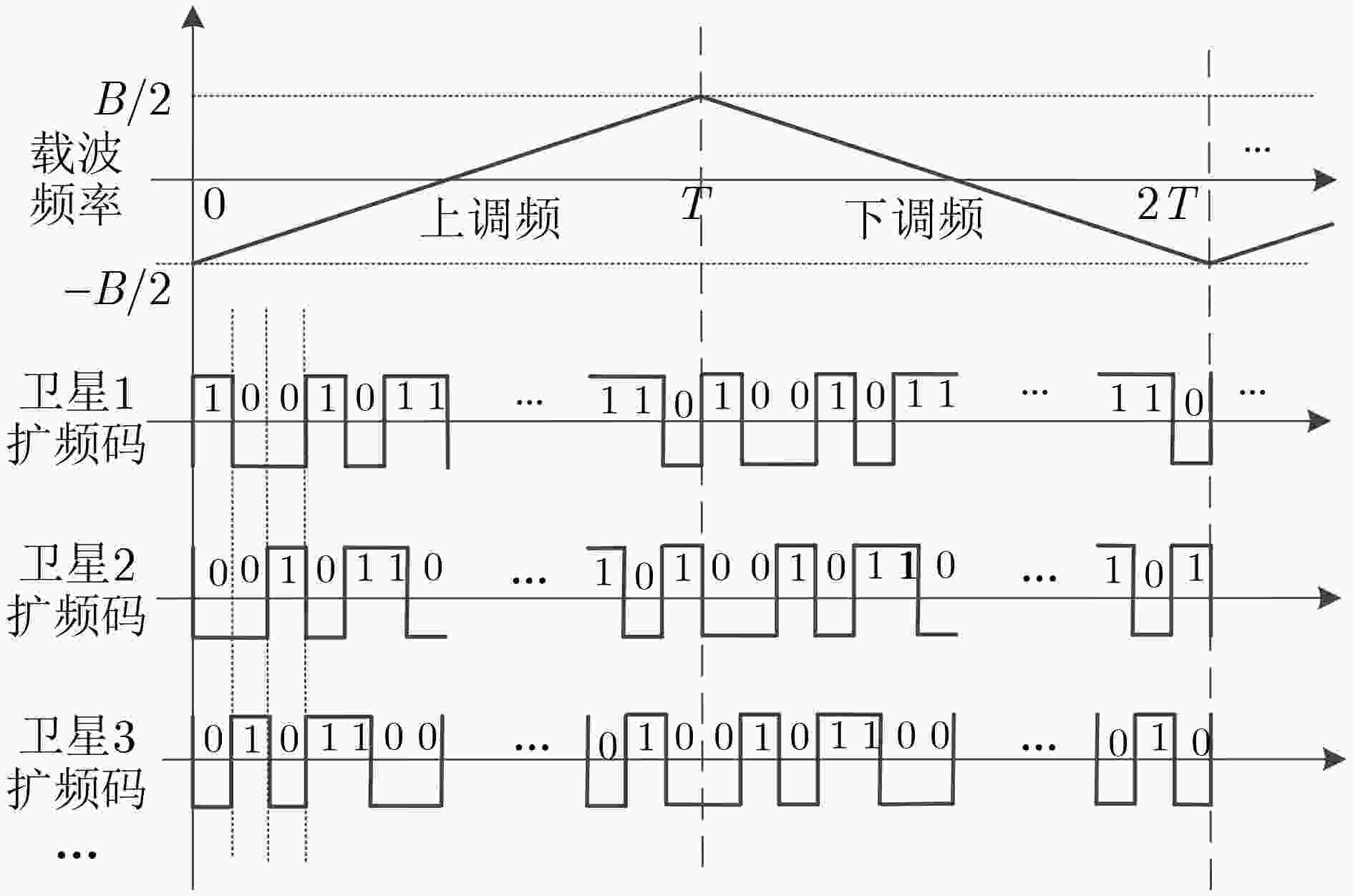
 下载:
下载:
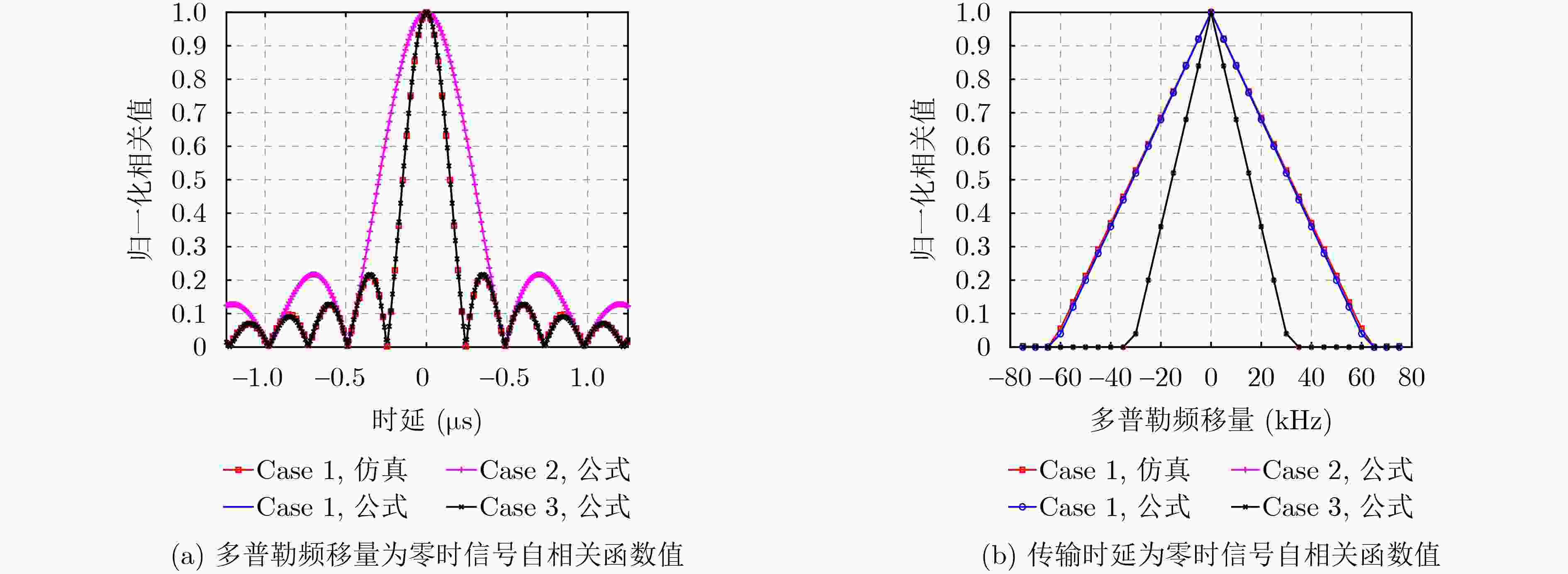

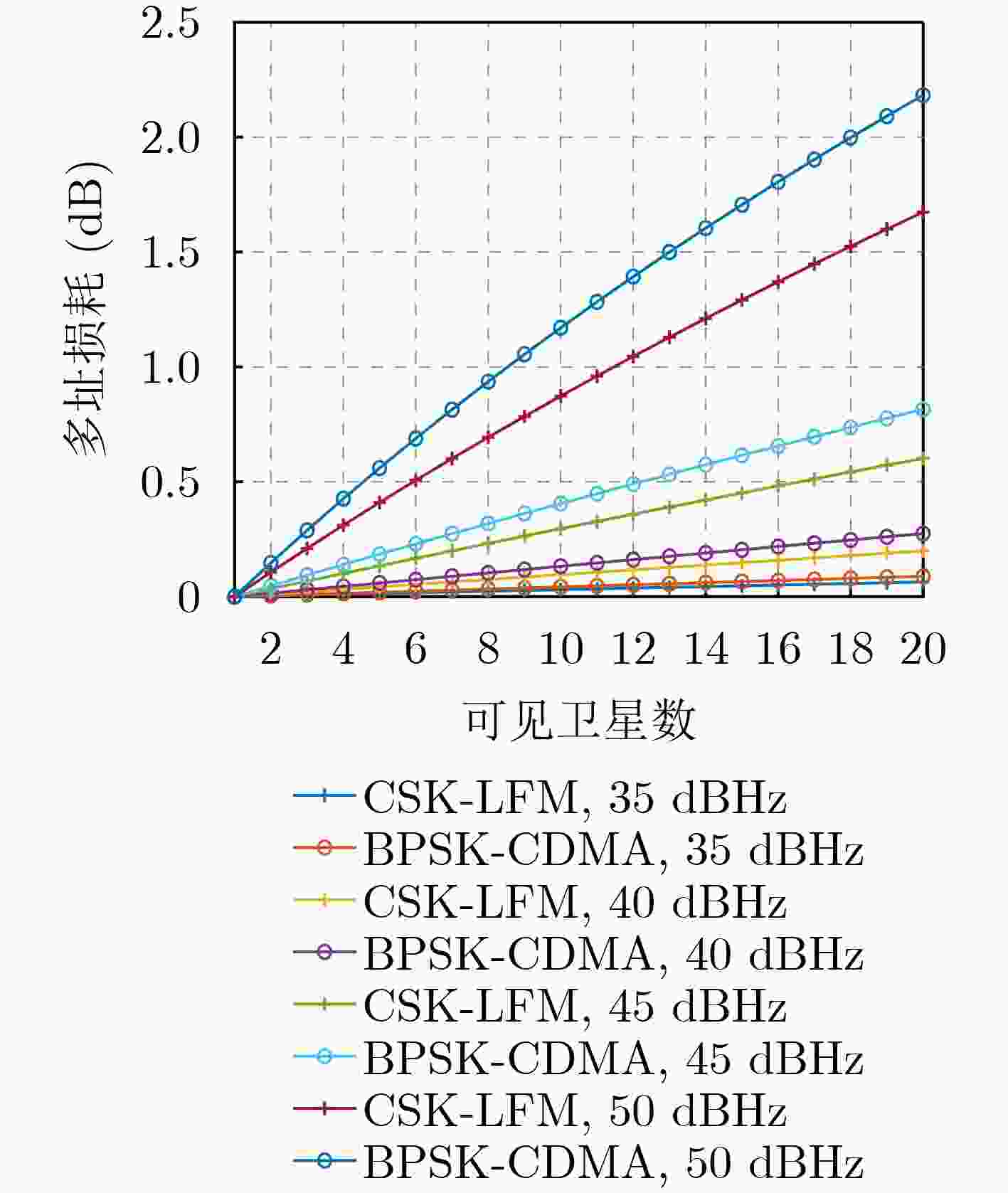



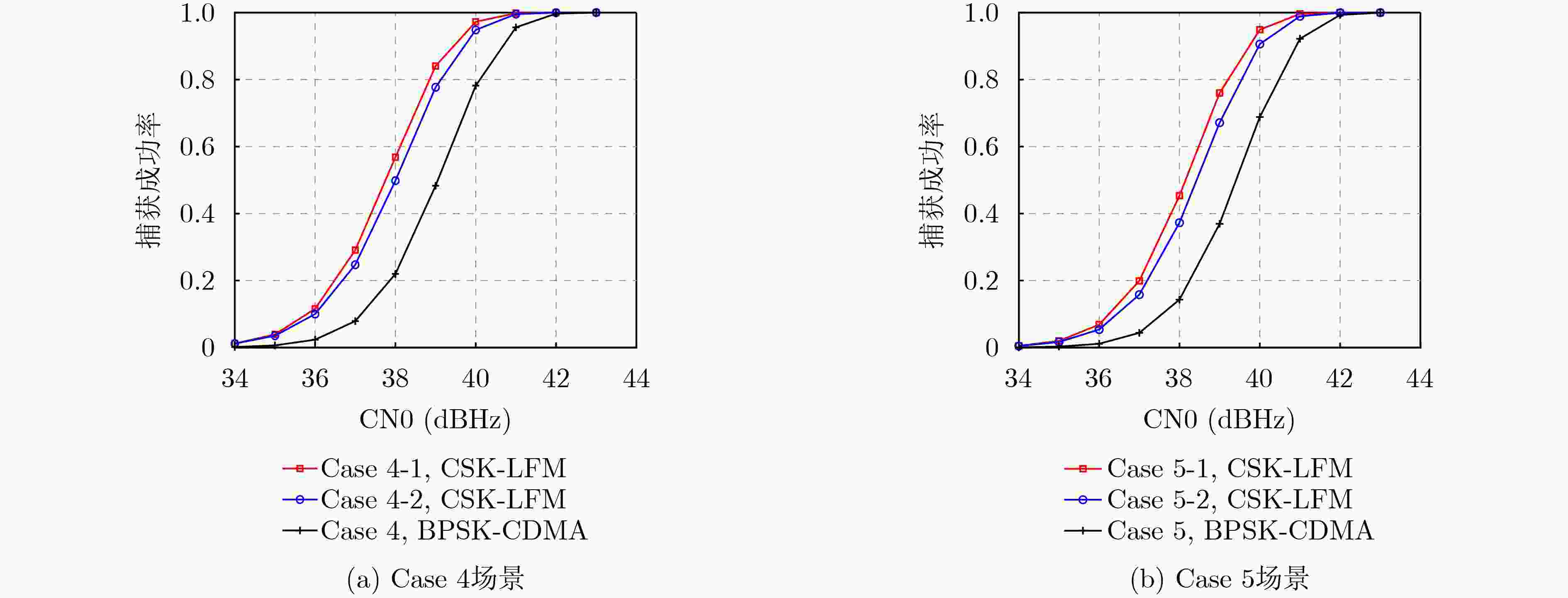
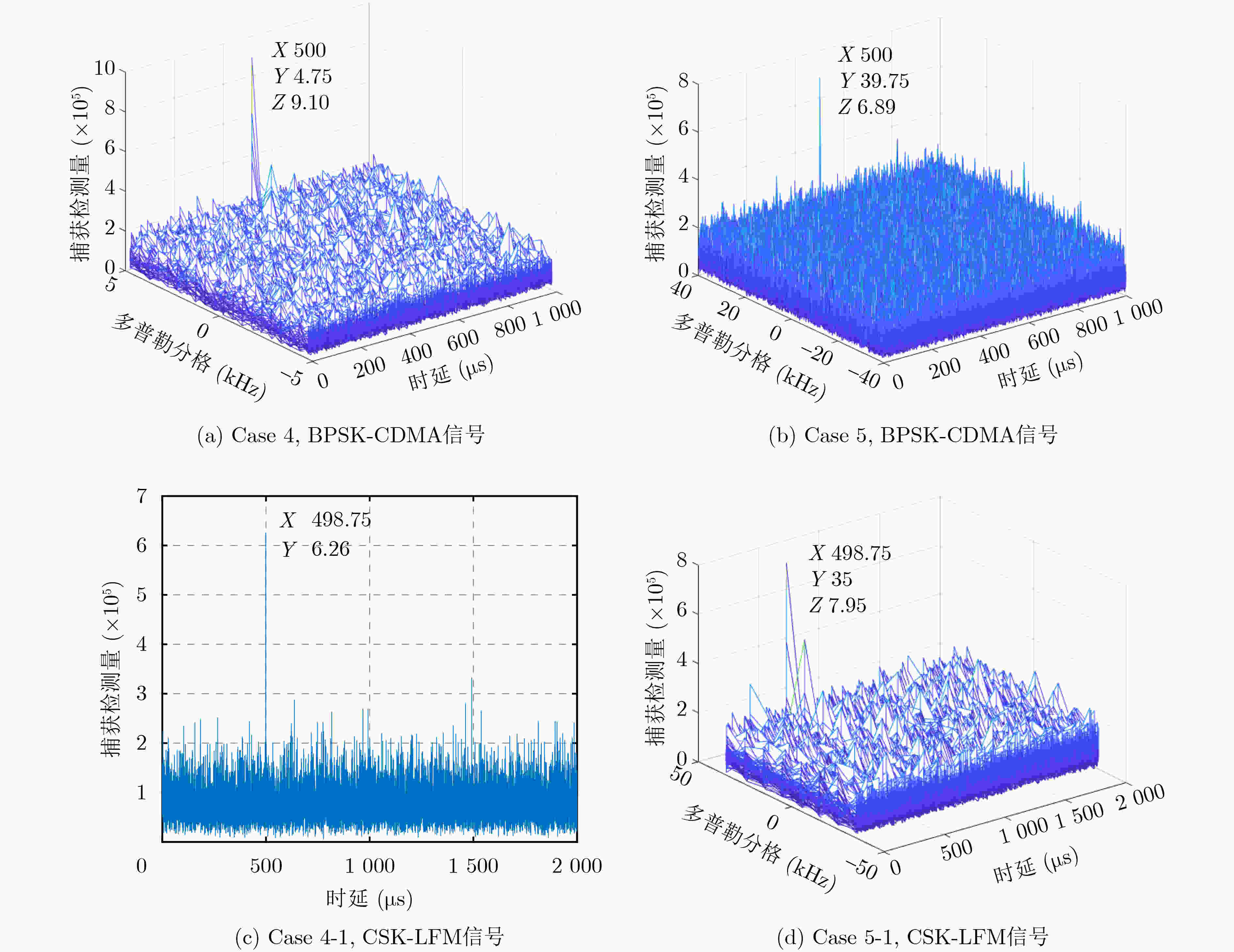
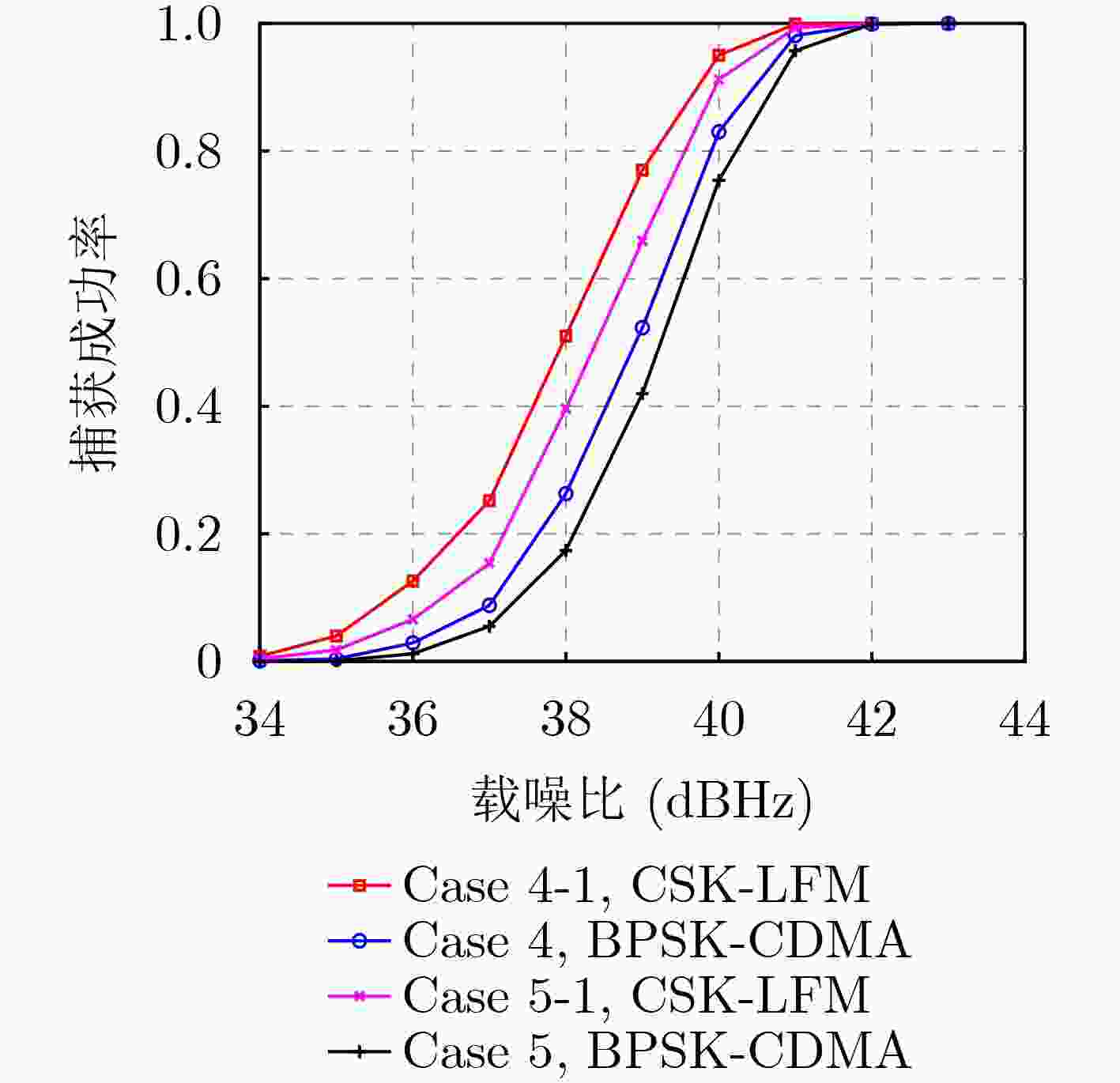
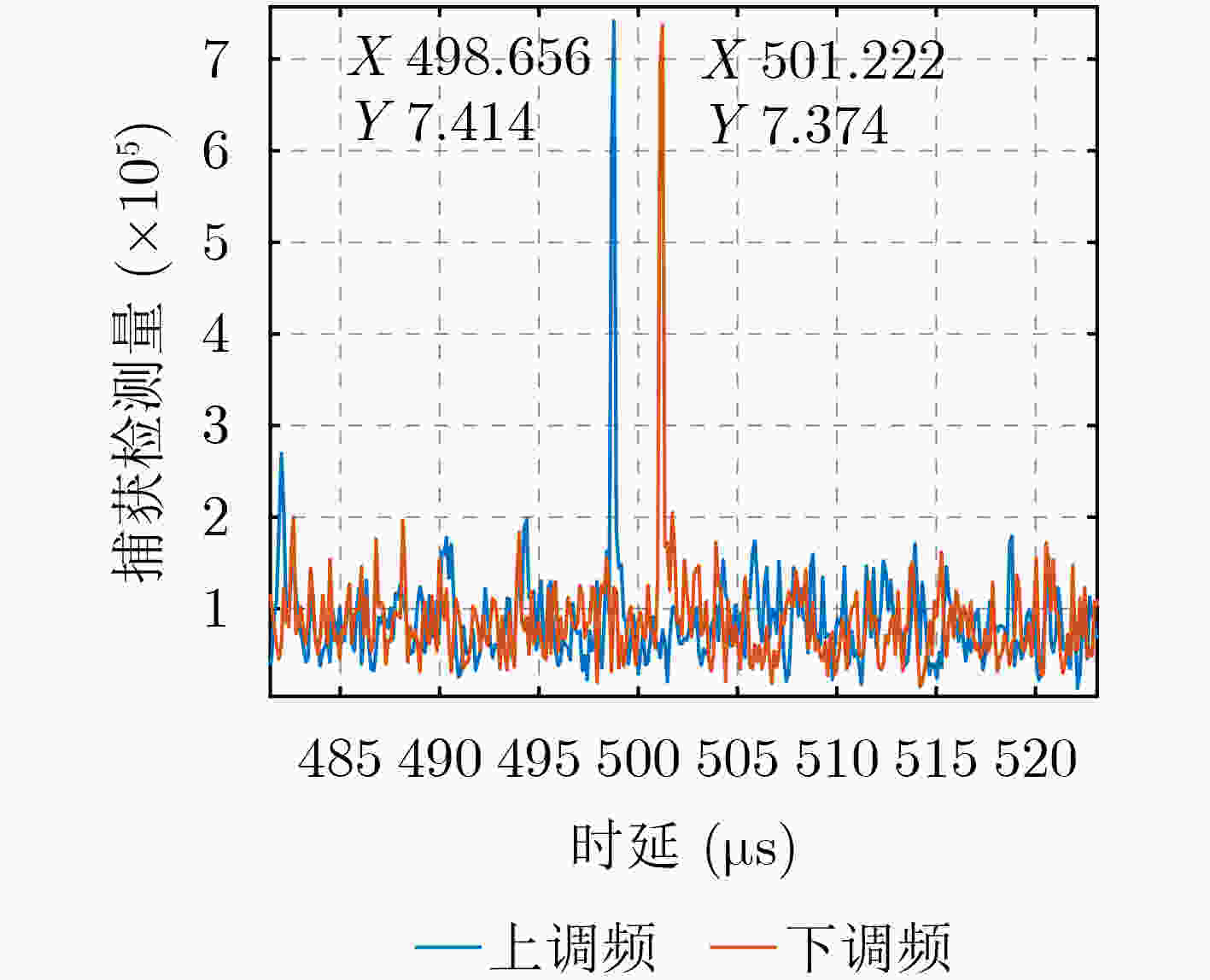
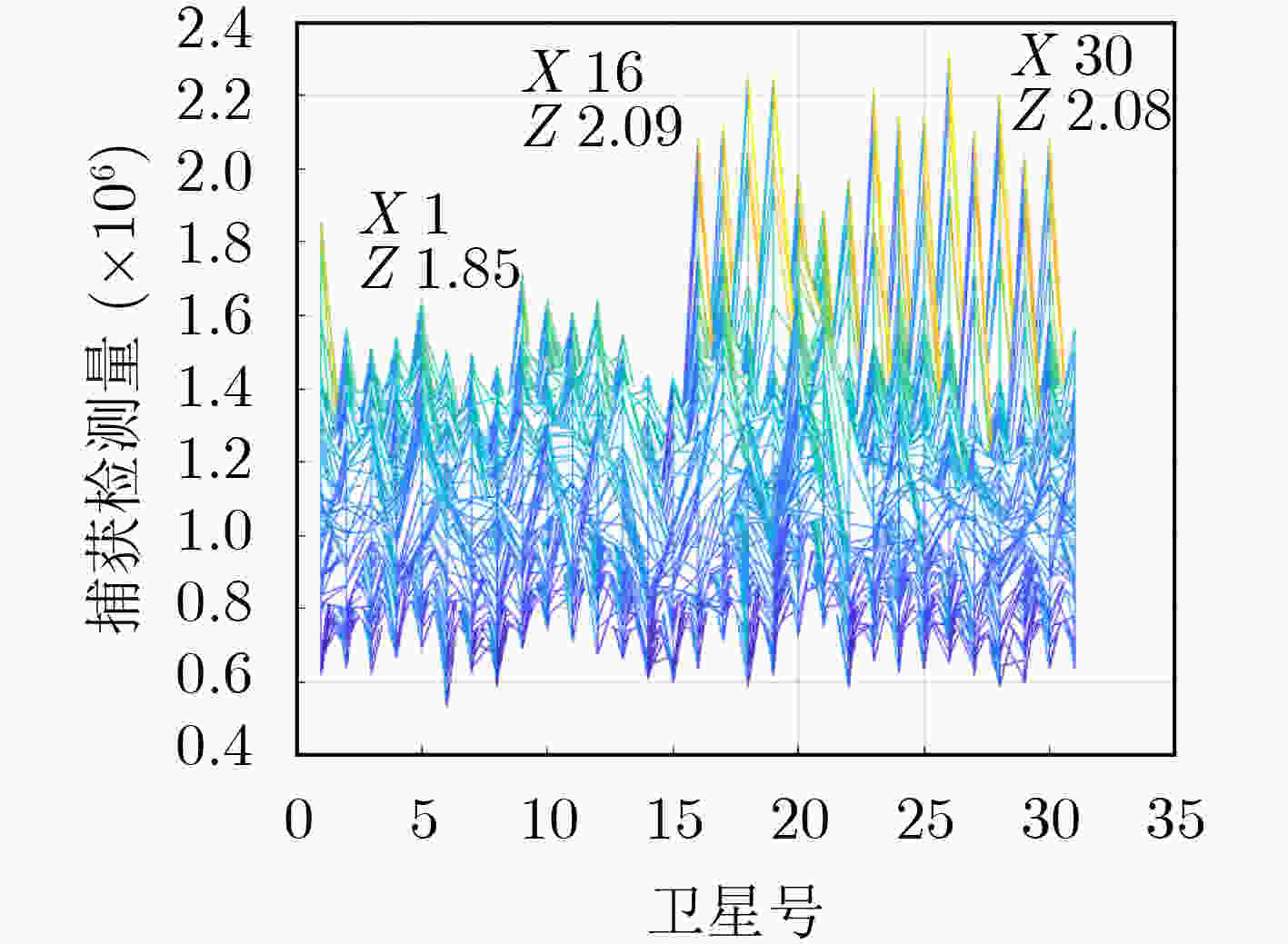


 下载:
下载:
